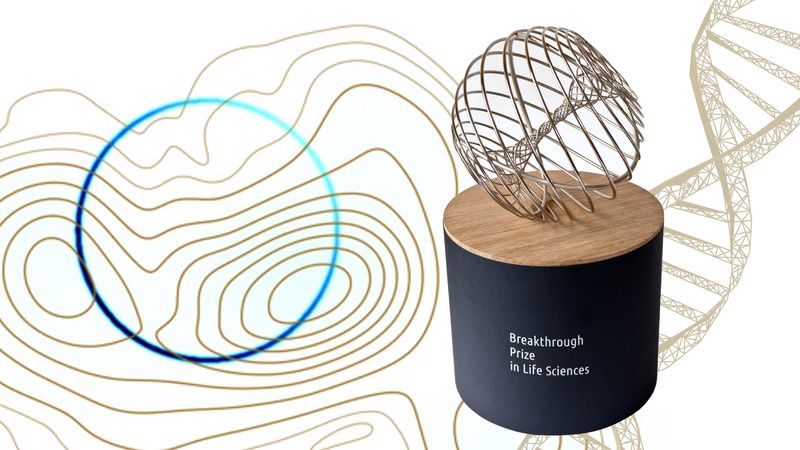The 2024 Breakthrough Prize laureates have been announced, as well as the recipients of the New Horizons and Maryam Mirzakhani New Frontiers Prizes. The so-called “Oscars of Science” are the world's largest international science prize and this year awarded $15.75 million in total.
The five mainstage prizes (3 in life sciences, 1 in fundamental physics, and 1 in mathematics) are each worth $3 million. The first prize in Life Science went to Sabine Hadida, Paul Negulescu, and Fredrick Van Goor for developing a drug that can repair an important protein in patients with cystic fibrosis.
These patients have a mutation in a gene that makes a protein called CFTR. In 90 percent of the cases, the protein is misfolded and it cannot reach the surface of cells where it ought to be, and if it does, it is not enough. People with cystic fibrosis had an average life expectancy of 30 years, although that is increasing over time. Therapies like their TRIKAFTA employ small organic molecules to fix the proteins a revolutionary approach.
“Until our therapies became available, there were no treatments that addressed the underlying cause of CF. CFTR modulators have truly changed the standard of care. For example, recently published data from the UK showed that children treated with TRIKAFTA between ages 12-17 would live an average of 82.5 years,” the team, who works for Vertex Pharmaceuticals, told IFLScience.
“Our work has also had implications beyond CF. We demonstrated that small molecule therapies could be used to restore defective proteins and treat genetic diseases. This approach that was then revolutionary has created optimism that other genetic diseases could be treated with small molecule therapies.”
A second Life Science prize was awarded to Carl H. June and Michel Sadelain for the development of chimeric antigen receptor T-cell immunotherapy. This approach modifies the immune cells of patients to target and kill cancer cells and subsequent developments are showing a great deal of promise. Research is now looking into preventing tumor recurrence, as well as possible ways to employ the approach against autoimmune, inflammatory, cardiac, and neurodegenerative disease.
The third Life Science prize has gone to Thomas Gasser, Ellen Sidransky, and Andrew Singleton for their work in identifying risk genes for Parkinson’s disease. Their work led to a paradigm shift in how the disease is understood and how it develops. This shift has also had a massive impact on new therapies in terms of target and administration, looking to stop the disease progression or prevent its onset altogether.
The Fundamental Physics prize was awarded to John Cardy and Alexander Zamolodchikov for their work in extending and evolving Quantum Field Theory. In particular, Cardy invented the mathematics of certain transitions in quantum systems such as helium becoming a frictionless superfluid or the emergence of superconductivity in certain conditions.
The Mathematics prize was given to Simon Brendle for transformative contributions to differential geometry, in particular, fluctuating curved spaces. If you think of a soap bubble trapped between the turns of a spring that is oscillating, measuring the surface of those bubbles is what this math is about. The applications are varied and include the understanding of space-time itself.
Phase transitions, curves, and peculiar surfaces were also among the research focus of the recipients of the Maryam Mirzakhani New Frontiers and the New Horizons prizes in mathematics. Each category had three winners. The former had Hannah Larson, Laura Monk, and Mayuko Yamashita, each receiving $50,000. The latter prizes were awarded to Roland Bauerschmidt, Michael Groechenig, and Angkana Rüland.
The New Horizons in Physics prizes are very much looking up – as they are very much focused on astrophysics. Laura M. Pérez, Paola Pinilla, Nienke van der Marel, and Til Birnstiel shared one for their work on dust traps around young stars and how they might lead to the formation of planets. Another one was shared by Mikhail Ivanov, Oliver Philcox, and Marko Simonović for their work on the large-scale structures of the universe and what fundamental physics we can gain from them.
Last but certainly not least, Michael Johnson and Alexandru Lupsasca have received the New Horizons prize in physics for their work on the photon ring, the structure made of light that forms around a black hole.
“Black holes are the most pure and elegant objects in the universe, defining the boundaries of knowledge and setting the bar for our most ambitious experiments and theories. But the swirling, glowing gas that lets us 'see' astrophysical black holes also masks their simplicity. It's as though we are trying to study a tiny gem that lies at the eye of a hurricane,” laureate Michael Johnson, from the Center for Astrophysics | Harvard & Smithsonian, told IFLScience.
“The photon ring is made of light that has circled the black hole before escaping to us, and it has the properties of the black hole imprinted on it. This escaping light then passes through all the surrounding material unscathed, letting us directly see the elegant geometry of a black hole's space-time. It is an incredible property of black holes and unlike anything we've ever studied.”
Getting this information would be crucial to test theories of gravity, to better understand this fundamental force of nature. Johnson and Lupsasca have a plan to measure the photon ring by improving the Event Horizon Telescope, the virtual facility the size of our planet responsible for the first photographs of black holes. These were the one at the center of M87 (AKA M87*) and the one at the center of the Milky Way (Sagittarius A*)
“The EHT is an extraordinary experiment that has succeeded in leveraging a globe-spanning array of telescopes to capture the first image of a real black hole in the sky. However, its present resolution is limited by the diameter of the Earth: to achieve an image with the required sharpness to resolve the photon ring, it seems imperative to enhance the array with a space satellite at greater separation from the other telescopes,” laureate Alexandru Lupsasca from Vanderbilt University, told IFLScience.
“Together with Michael Johnson and many talented colleagues, we are now developing a detailed proposal for NASA to launch a space mission targeting the photon rings of the supermassive black holes M87* and Sgr A*, the black hole at the center of our own galaxy.”
Each New Horizon Prize is worth $100,000. Since the Breakthrough Prize's inception, $308 million has been awarded. The prizes were founded in 2012 by sponsors Sergey Brin, Priscilla Chan & Mark Zuckerberg, Julia & Yuri Milner, and Anne Wojcicki.




